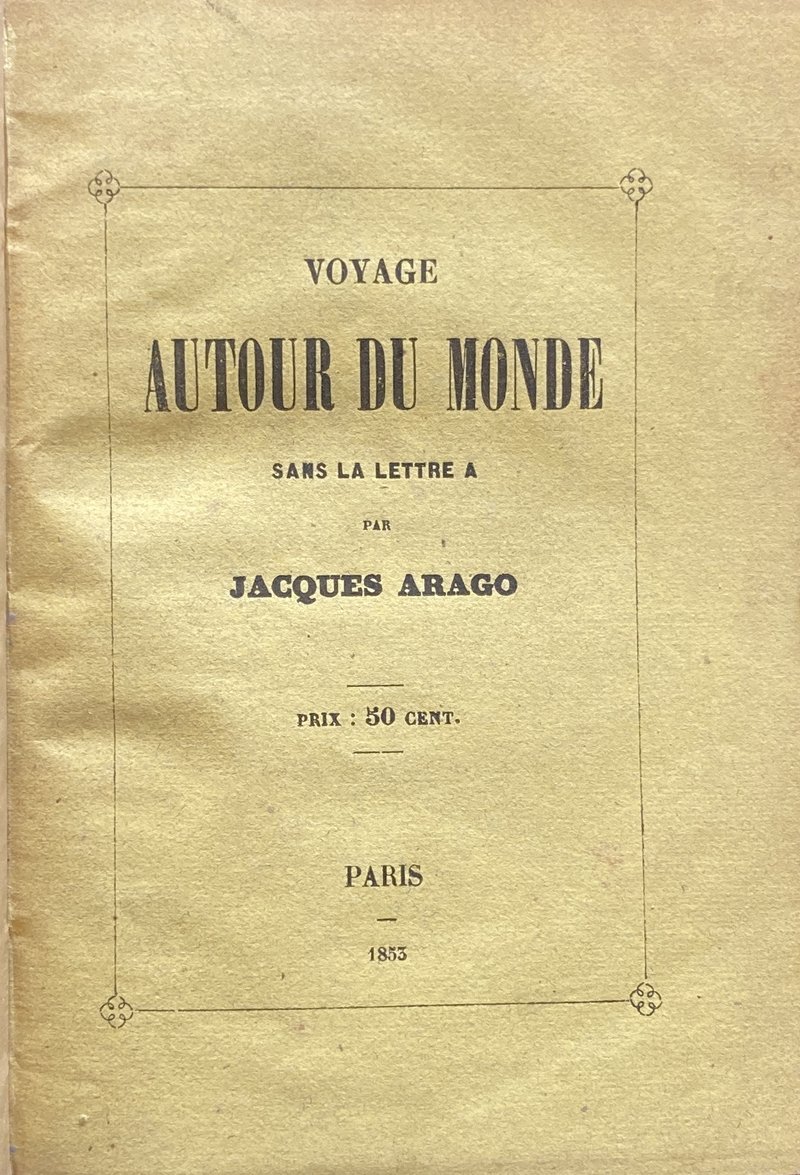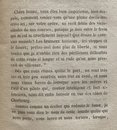Voyage Autour du Monde Sans la Lettre A.

Arago, Jacques. Voyage Autour du Monde Sans la Lettre A.
Paris, Typographie Beaulé, 1853.
(16.5 x 11 cm). [1-3] 4-30, [2] pp. Late 19th cen. yellow cloth over marbled boards, author-title in gilt on the flat spine, yellow endpapers matching the color of the original publisher’s fragile wrappers, which are bound in. An excellent copy of the first edition, first issue of this rare title.
Description: sans la lettre A
Very rare first issue of the first edition of this celebrated if brief lipogram, written entirely without the use of the letter "A." –with one exception, which identifies this as the first issue: the verb “serait [would be]” appears on p. 27 (shown at right), which is thought to be an involuntary error (based on the fact that the word was changed to “eurent [had]” in the subsequent issue. The letter ‘A’ also appears on p. 18, “fauteuil élastique [elastic chair]," an unusual formulation that was perhaps intended to be detected by the reader? Other than the title and the author’s name, there are no other uses of the letter ‘A’.
Jacques Arago (1790-1855), was a writer and explorer who participated on the Freycinet around the world expedition aboard the Uranie, 1817-1820, publishing an account of the voyage, Promenade autour du monde pendant les années 1817-1822… (1822), which he followed with Souvenirs d'un aveugle. Voyage autour du monde... (1839), and other popular works. The present fascinating text is said to be the result of a wager made between Arago and a female dinner companion, Caroline, whom he bet he could produce a version of his earlier travel narrative written without the letter A.
The initial paragraph of the work addresses the challenge, “Chère bonne, vous êtes bien impérieuse, bien despote, comment voulez-vous qu'une plume docile inscrive ici, sur votre ordre, un récit fidèle des vicissitudes de nos courses, puisque je dois subir le frein qui m'est si cruellement imposé ?” [which we leave untranslated to preserve the original ‘A’-less version]. The work ends with a response from his dinner companion, under the heading, “Réponse d’une Inconnue”—written without the use of the letter ‘C’ and signed “AROLINE’.
Arago’s lipogram, which is part of a rich tradition that dates to the the ancient Greeks (Lasus of Hermione), is preceded in France by, Vers Leipogrammes, by Salomon Certon, 1620, a suite of 23 sonnets organized alphabetically and titled with the letter that is not used (A-Z, ignoring J, U, and W), and followed by Georges Perec’s celebrated work La Disparition (1969), a full-length novel written without the letter ‘E’. Perec, a leading member of OULIPO, a master of word games, and the author of “Histoire du Lipogramme” (Gallimard 1973) was intimately aware of the tradition, and perhaps inspired by Arago.

